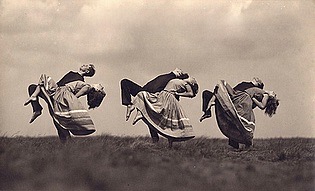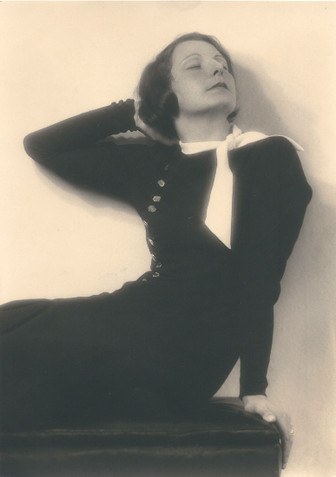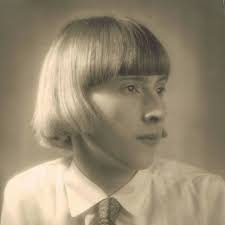
Will Burgdorf, born 1905 Hannover, was a German photographer. Will went to Dresden at the beginning of the 1920s, where he completed his training in the studio of Bruno Wiehr. He then returned to his hometown in the late 1920s still a teenager.
Will Burgdorf married dancer Maria, whom he met during his training in Dresden, in 1927. Although the couple's biographies are still relatively unknown, it is said that she completed dance and gymnastics training in Dresden. When they both moved to Burgdorf's hometown of Hanover in 1927, closer contact with the theatre soon arose.
Will is now mostly remembered for his photographs of dancers. It is possible that this connection came from Maria Burgdorf's friendship with Yvonne Georgi from the Dresden Wigman School, who became a dance director at the theatre in Hanover in the 1926/27 season and initially opened a dance school at Jägerstraße 12A.
Before using his camera professionally, he used it for photographic self-studies and portraits of his wife, members of the ensemble of the Hannoversche Schauspielhaus, as well as Yvonne Georgi's dance partner Harald Kreutzberg.
The dance and dancer photos by Will, in addition to the photographs of Harald Kreutzberg, featured a number of students who made it into opera house dance groups: namely Dieter Borsche, who later became a prolific actor, and also Heinz Schwarze, Eduard Böttger, Ilke Schellenberg, Alice Hammerich and Gisela Jeimke.
Burgdorf also photographed dancers who were apparently not involved in the theatre who needed photos for applications and guest performances including Margot Dagmar, Käthe Heydenreich, Renate Heydenreich, Walter Howind and many others. He has also made a number of portraits of Hanoverian actors, artists, writers and their circle of friends and acquaintances, including Theodor Lessing and Joachim Ringelnatz.

Will became a specialist in portrait photography and was well know in his hometown of Hanover as a professional portrait photographer. He had at least one photo-documented exhibition of portrait photos at his studio in the early 1930s but information about him as a portrait photographer can now only be found in specialist literature.
Although his portrait photos were proven to be of artistic value, they were mostly commissioned by private individuals who were not “in the public eye”. Only a small number of his customers, namely members of the theatre in Hanover, needed to see their photos published, for example in the program booklets or on autograph postcards.
Will was drafted into the Wehrmacht and died as a solider at the front in 1944 at the age of 39, just at the end of the war. With no successor or plans put in place his photo studio ended with him.
Although the negatives and a large number of prints with his wife and their sons survived the war, there was virtually no retroactive use for them: You might need a new, current portrait of yourself, but none from the past; it was a "closed" inventory. Nonetheless, the family kept them for decades and did not separate and destroy the photos of the many private individuals in order to save space, as other photographers did and still do.
After the death of Burgdorf's widow Maria in 1980, their son Mario Burgdorf took over his father's photo archive. A few years before his death in 2004, he is said to have been in contact with the city archives in Hanover about a takeover, but finally left his father's photo archive to a Munich antiquarian.
Apparently he delivered the archive to a small Munich auction house, where the holdings were resold in several parts to various interested parties. There is a complicated chain of further sales and resales. One of the buyers specifically offered an extensive inventory of around 780 dance photos and dancer portraits and a few other topics to the German Dance Archive in Cologne, where they finally found a suitable home. Will's photographs are rare and when put up for sale are done so at an extortionate price.
Will captured the time of a creative explosion before the War, of the actors and dancers, some who went on to great success after the War, others whose names have been lost from history or, like Will, didn't survive to see the end of the horror. Will is now remembered for his beautiful photographs of this artistic movement, portraits that captured the magical and original characters of his time. Part of the lost generation of Germany's bright young things.















































































































































Comments